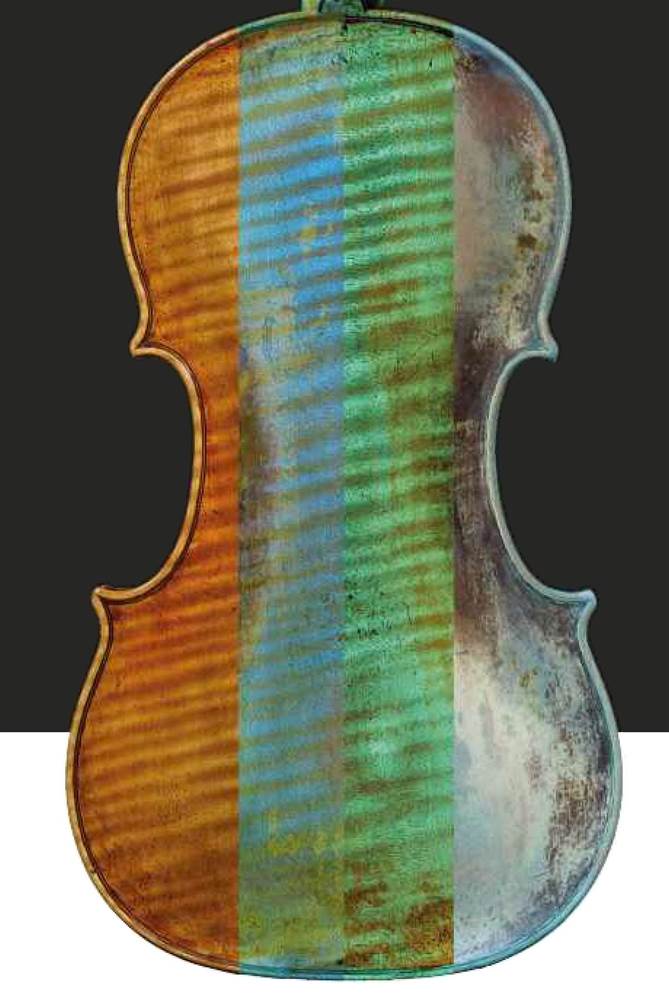
Violin by David Tecchler under (left–right) visible light; blue (460nm with filter); cyan (490nm) and ultraviolet light (320–400nm)
Since as early as the mid-20th century, historical art objects such as stringed instruments have been examined and appraised not only in visible light (VIS), but also with light in other spectral wavelength ranges. This has nowadays become a significant part of detailed examinations, as it makes visible several features that would otherwise go undetected, to visualise and interpret the condition of an instrument more fully. Information gained in this way can be helpful in determining the instrument’s condition, both for the purposes of documentation and also as an aid to restoration work.